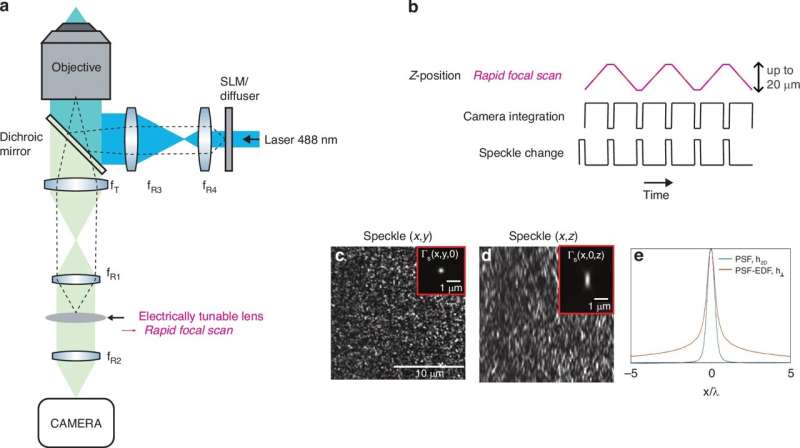Fluorescence microscopy is a powerful tool in biology, allowing researchers to visualize the intricate world of cells and tissues at a molecular level. While this technique has revolutionized our understanding of biological processes, imaging large and complex 3D structures, such as embryos or organoids, remains a challenge. This is especially true when studying intricate details beyond the optical resolution limit using structured illumination microscopy (SIM).
SIM uses multiple images acquired under structured illumination to reconstruct a super-resolved image, exceeding the diffraction limit of traditional microscopy. However, SIM requires acquiring multiple images for each slice of the 3D volume, leading to lengthy acquisition times and increased light exposure of living samples.
To overcome these limitations, a collaboration between Institut Fresnel at Aix Marseille University and the Centre de Biologie Intégrative at Toulouse University in France led to the development of a new type of microscope called Extended Depth-of-Field Random Illumination Microscopy (EDF-RIM). This innovative approach combines the benefits of super-resolution microscopy with an extended depth-of-field detection scheme, allowing for the capture of entire volumes in a single image. The work is published in the journal Light: Science & Applications.
EDF-RIM is built upon the foundation of Random Illumination Microscopy (RIM), a super-resolution technique that utilizes random speckle patterns for illumination. These patterns are statistically insensitive to scattering or aberrations. RIM uses multiple images taken under different speckle patterns to generate a super-resolved image through a numerical algorithm that analyzes the variance of the images. This unique approach makes RIM particularly well-suited for 3D imaging.
EDF-RIM addresses the limitation of needing multiple images per slice by incorporating an extended depth-of-field (EDF) detection system. This system rapidly scans the focal plane, effectively projecting the entire 3D volume onto a single image. This dramatically reduces the time needed for image acquisition and significantly minimizes light exposure.
The EDF-RIM system has been shown to deliver significant advantages over conventional EDF microscopy, including improved contrast and a two-fold enhancement in resolution. However, the projection nature of EDF-RIM means that axial information is lost.
For samples where fluorescence is distributed over a curved surface, such as drosophila epithelium, the researchers have developed a method to estimate the surface topography. This allows for the reconstruction of a laterally super-resolved 3D image with accurate representation of the object’s shape.
EDF-RIM represents a significant advancement in fluorescence microscopy, offering a more efficient and powerful way to image large and complex 3D structures. This technology holds tremendous promise for advancing our understanding of biological processes, especially in areas where speed, resolution, and minimal light exposure are critical factors.
More information:
Lorry Mazzella et al, Extended-depth of field random illumination microscopy, EDF-RIM, provides super-resolved projective imaging, Light: Science & Applications (2024). DOI: 10.1038/s41377-024-01612-0
Citation:
Fast super-resolved microscopy enables structured illumination and extended depth detection (2024, October 18)
retrieved 18 October 2024
from https://phys.org/news/2024-10-fast-super-microscopy-enables-illumination.html
This document is subject to copyright. Apart from any fair dealing for the purpose of private study or research, no
part may be reproduced without the written permission. The content is provided for information purposes only.

